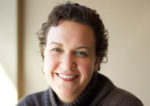You might think that young children, most of whom are rarely out of a parent’s sight, are unlikely to be injured. In fact, nearly 300 children under four die each month in the U.S. from preventable injuries, including suffocation, falls, poisoning, drowning, burns, and car crashes.
Parents may prevent many of these injuries by being alert to their child’s motor-skill abilities, and identifying and removing potentially dangerous items to provide a safe environment.
The inquisitive, highly mobile toddler is, of course, more at risk than a less mobile baby. But before you know it, your baby may wiggle off a bed or grab a hot cup of coffee from the counter.
Your child may climb before walking, or he may suddenly be able to walk and grasp at anything. Toddlers need a watchful eye because they do not understand the dangers of exploring. Children adopted as preschoolers often lack life experiences, so they may need to be taught safety at the level of a toddler.
Keep Your Child Safe
Remove or lock up unsafe items from your child’s reach.
Think preventively about dangers such as hot water heaters, small toys that are choking risks, and toxic cleaning solutions or medicines that need to be kept away from inquisitive children. But no matter how diligent our efforts, we cannot remove all dangerous items. So children must be protected by distraction, redirection, and explanations appropriate for their level of understanding.
Provide only proper-sized bites of soft foods, and keep choking hazards (such as nuts, raisins, popcorn, hot dogs, whole grapes and hard carrots), away from your children.
Toddlers vary widely in their number of teeth and their ability to chew, and they often eat fast and without care. Feeding themselves, a critical developmental task at this stage, increases choking risk as well. Choking prevention is especially important during the months immediately after the arrival of children with oral motor dysfunction as a result of orphanage bottle propping.
Use preventive measures to thwart common injuries.
Use appropriately anchored and positioned car safety seats on the first trip home from the hospital or airport. Check the stability of stairway gates and window guards. Cover electrical outlets and radiators; install inside latches on low cabinets in kitchens and bathrooms. Tie up window shade and mini-blind cords. Avoid using baby walkers.
Don’t forget to fill out and send in warranties when you purchase equipment and furniture so you will be notified in case the product gets recalled. Check with the U.S. Consumer Product Safety Commission (www.cpsc.gov) periodically to see if any items you own have been recalled.
Keeping small or hazardous objects out of reach requires vigilance. Do not allow your toddler to be alone in or near a bathtub, a pail of water or a pool. Keep toxic substances or medications in safety-approved containers that are stored well out of your child’s reach. Be sure to lower the temperature of your hot water heater to between 120°F and 130°F. With these measures, you can protect your exploring child.






